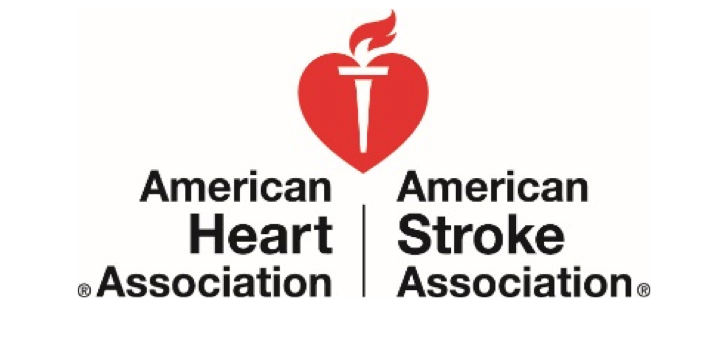 SANTA MARIA — Stroke is a leading cause of preventable death, but lack of awareness, education and resources are major barriers to stopping it. But, if you’re like most Americans, you don’t know the signs of stroke. The American Stroke Association, a division of the American Heart Association, and Dignity Health Central Coast —our local Life is Why sponsor — arehelping to bring awareness to the nation’s No. 5 leading killer.
SANTA MARIA — Stroke is a leading cause of preventable death, but lack of awareness, education and resources are major barriers to stopping it. But, if you’re like most Americans, you don’t know the signs of stroke. The American Stroke Association, a division of the American Heart Association, and Dignity Health Central Coast —our local Life is Why sponsor — arehelping to bring awareness to the nation’s No. 5 leading killer.
“Anyone can have a stroke and everyone should be ready,” says Kirsten Featherstone, Neuroscience Services Manager, Dignity Health Central Coast. “Learning how to spot a stroke by learning F.A.S.T. is just as important as teaching your family CPR or what to do in the event of a fire. With stroke — just like a cardiac arrest or a fire — seconds count.”
F.A.S.T. is:
- F – Face Drooping: Does one side of the face droop or is it numb? Ask the person to smile.
- A – Arm Weakness: Is one arm weak or numb? Ask the person to raise both arms. Does one arm drift downward?
- S – Speech Difficulty: Is speech slurred, are they unable to speak, or are they hard to understand? Ask the person to repeat a simple sentence like, “The sky is blue.” Is the sentence repeated correctly?
- T – Time to call 9-1-1: If the person shows any of these symptoms, even if the symptoms go away, call 9-1-1 and get them to the hospital immediately.
Additional stroke signs include: sudden severe headache with no known cause; sudden trouble walking, dizziness, loss of balance or coordination; sudden trouble seeing in one or both eyes; or sudden confusion or trouble understanding.
“Many people think of strokes as a disease of the elderly, but it can happen to anyone at any time, even very young people,” says Featherstone. “When someone recognizes a stroke and quickly calls 9-1-1, the person has a greater chance of getting to an appropriate hospital quickly and being assessed for a clot-busting drug or a medical clot-removal device that may save their brain tissue and prevent long-term disability.”
Teaching people how to recognize a stroke and respond quickly is a primary goal of the American Stroke Association.
“We must aggressively continue our efforts to reduce stroke, especially in multicultural communities and to reach people at younger ages,” states Featherstone. “If people are not aware of how to prevent, treat and beat stroke, they can’t take advantage of the progress made over the last twenty years to save lives.”
To learn more about stroke, visit StrokeAssociation.org.
About the American Heart Association: The American Heart Association is devoted to saving people from heart disease and stroke – the two leading causes of death in the world. We team with millions of volunteers to fund innovative research, fight for stronger public health policies and provide lifesaving tools and information to prevent and treat these diseases. The Dallas-based association is the nation’s oldest and largest voluntary organization dedicated to fighting heart disease and stroke. To learn more or to get involved, call 1-800-AHA-USA1, visit heart.org or call any of our offices around the country. Follow us on Facebook and Twitter.
About the American Stroke Association: The American Stroke Association is devoted to saving people from stroke — the No. 2 cause of death in the world and a leading cause of serious disability. We team with millions of volunteers to fund innovative research, fight for stronger public health policies and provide lifesaving tools and information to prevent and treat stroke. The Dallas-based association officially launched in 1998 as a division of the American Heart Association. To learn more or to get involved, call 1-888-4STROKE or visit StrokeAssociation.org. Follow us on Facebook and Twitter.
The American Heart Association/American Stroke Association receives funding mostly from individuals. Foundations and corporations donate as well, and fund specific programs and events. Strict policies are enforced to prevent these relationships from influencing the Association’s science content. Financial information for the American Heart Association, including a list of contributions from pharmaceutical companies and device manufacturers, is available at http://www.heart.org/corporatefunding.
About Dignity Health Central Coast: Dignity Health Central Coast is comprised of five award-winning hospitals, all recognized for their quality of care, safety and service, primary care offices, premier ambulatory surgery centers, technologically advanced imaging centers, outpatient services, and comprehensive home health services. Hospitals in the Dignity Health Central Coast region include Arroyo Grande Community Hospital in Arroyo Grande, French Hospital Medical Center in San Luis Obispo, Marian Regional Medical Center in Santa Maria, St. John’s Pleasant Valley Hospital in Camarillo, and St. John’s Regional Medical Center in Oxnard. Each hospital is supported by an active philanthropic Foundation to provide additional funding to support new programs and services, as well as to advance the community’s access to health care. For more information, visit dignityhealth.org/centralcoast.
